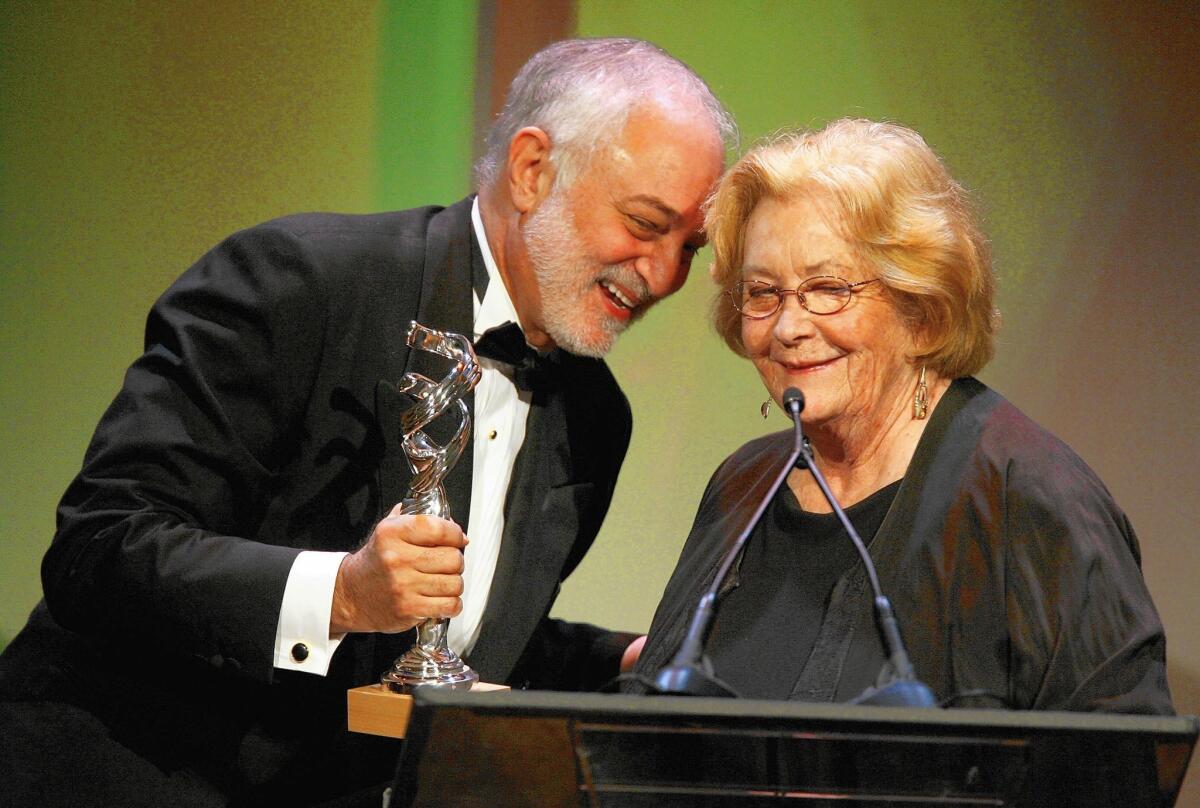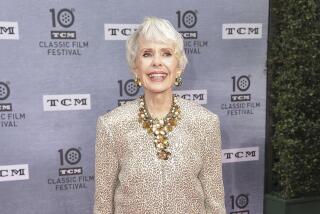Patricia Norris dies at 83; Oscar-nominated costume designer

Costume designer Patricia Norris, whose work on “12 Years a Slave” garnered her a sixth Oscar nomination, mostly avoided films with contemporary settings.
“They’re very boring to me,” she told the New York Times in 2013. “I’m not a shopper.”
She made a major exception for her collaborations with director David Lynch on his off-kilter “Blue Velvet,” “Wild at Heart,” “Twin Peaks” and others.
“I can’t do a modern movie,” Norris said, “unless it’s sort of twisted.”
Norris, 83, who won an Emmy for her work on the 1990 “Twin Peaks” TV pilot, died Feb. 20 at her home in Westlake Village. She had been ill and died of natural causes, said her agent, Ann Murtha.
Norris amassed about 100 film and TV credits in her more than four-decade career. Her other Oscar nominations were for “Days of Heaven” (1978), “The Elephant Man” (1980), “Victor Victoria” (1982), “2010” (1984) and “Sunset” (1988).
Norris was born March 22, 1931, in California, according to voter registration records. As a student at Stanford University, she studied archaeology and paleontology. In 1965 she got a job as a stock girl in MGM’s costume department to provide for her children she was raising as a single mother, she told the Seattle Times in 1990.
Working her way up, she earned her first credit as a costume designer on the James Garner western “Support Your Local Gunfighter” (1971).
“The Elephant Man,” set in Victorian England, marked her first collaboration with Lynch.
“I love all aspects of filmmaking, except I don’t know costumes,” Lynch said in an interview this week. “For me, Patty was a godsend. She had a knack for figuring out exactly what would be right.
“The door to the dressing room would open, and you’d see this actor coming toward you, and everything fit the character.”
For “Twin Peaks,” on which she was production and costume designer, Norris perused secondhand shops for props and outfits. But Agent Cooper, played by Kyle MacLachlan, got a specially designed suit because she couldn’t find anything suitably plain.
“We didn’t want it to look like a Hollywood TV show, where everyone overdresses,” she told the Seattle Times in 1990.
It was just the opposite for Lynch’s highly stylized “Wild at Heart” (1990), starring Nicolas Cage and Laura Dern as lovers on the run. For much of the movie, Cage sports an unimaginably loud snakeskin jacket. “It’s somewhere between cool and annoying,” Norris told the Los Angeles Times in 1990.
Dern, in a sheer lingerie teddy over tights and cowboy boots, is dressed “the way you’d never look around mommy,” Norris said.
The outfits were not “real clothes, as in things you would actually wear,” Norris said. “There’s something about this film that’s beyond your sense of reality.”
Reality was what she was seeking for “12 Years a Slave,” based on the true story of Solomon Northup, a man kidnapped into slavery in the pre-Civil War South. But she could not find much reliable documentation on what slaves wore in that period.
“There were some etchings, but they tended to be very ‘happy’ — a slave sitting under a tree, eating an apple — drawn by a white man,” Norris said in a 2014 London Telegraph interview. Consequently, she decided to base the costumes on what was likely worn a couple of decades before the story took place.
“When you figure out how people were brought there and how they tried to take their identity from them,” she said in a New York Times interview, “you kind of understand the picture. If you died, you were buried naked and your clothes went to the next slave.”
Norris created about 1,000 costumes for the film. Slaves wore mostly plain-colored outfits, purposely distressed, while plantation owners had more frilly wear. For a masked party scene, she found masks at a variety of sources, including the Metropolitan Opera in New York. “I go anywhere,” she said.
The treasures she found on costume hunts over the years grew so voluminous that she opened her own costume shop, Private Collection, near Universal Studios. It housed more than 1,000 pairs of women’s shoes, vintage beaded gowns preserved in glass cases, hats organized by era and “tons of underwear,” she told the Seattle Times in 1990.
“It was getting silly,” she said of the collecting. “I had to go into business or stop doing it. Or you wind up one of those little old ladies with a big ball of string.”
The period clothing she designed for films was often not showy, which may have contributed to her never taking home an Academy Award. Months before “12 Years a Slave” won the best picture Oscar in 2014, she predicted — correctly as it turned out — that the costume award would go to the extravagant re-telling of F. Scott Fitzgerald’s “The Great Gatsby.”
“The Academy,” she said in the New York Times interview, “just loves its sequins.”
Survivors include a daughter, Kathy; and sons Patrick, Michael and Chris.
Twitter @davidcolker
More to Read
Start your day right
Sign up for Essential California for the L.A. Times biggest news, features and recommendations in your inbox six days a week.
You may occasionally receive promotional content from the Los Angeles Times.







